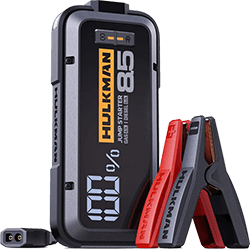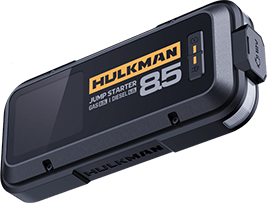Recent Articles
-
Mapping America’s Solar Landscape: Regional and Seasonal Variations November 11, 2025
-
Why Solva Solar Panels Stand Out: From Consumer’s Comment November 06, 2025
-
Unleashing Solar Power: Tips for Using and Maintaining Portable Solar Panels November 03, 2025
Featured Products
note
Solar Panels Unraveled: Understanding the Key Components for Efficient Power
Solar panels, whether powering homes from rooftops or charging portable power stations during camping trips, rely on a team of components working seamlessly to convert sunlight into electricity. From the core parts that capture and transform sunlight to the protective layers shielding them from the elements, each piece plays a vital role. In this blog, we'll break down solar panel components into three categories—power generators, support systems, and protective armor—using everyday scenarios to explain how they collaborate. We'll also highlight how products like portable power station complement these technologies for outdoor adventures.
In this article, we’ll cover:
- Why Solar Panel Components Matter
- Core Power Generators: The Heart of Electricity Production
- Support Systems: The Backbone of Energy Transfer
- Protective Armor: Shielding Against the Elements
- Performance Comparison: Large vs. Portable Panels
- Best Applications for Solar Panels
- The Future of Solar Panel Components
- Conclusin
Why Solar Panel Components Matter
Solar panels are marvels of engineering, turning sunlight into usable energy. But their efficiency and durability depend on the quality and synergy of their components. Whether it's a large rooftop array or a foldable panel for off-grid use, understanding these parts helps you choose the right panel for your needs—be it home energy, RV camping, or powering precision devices in harsh conditions.
Core Power Generators: The Heart of Electricity Production
Solar Cells are the workhorses that convert sunlight into electricity, acting like the panel's “engine”. Most panels use crystalline silicon cells, either monocrystalline or polycrystalline. Monocrystalline cells boast higher efficiency (18-25%) and long-term stability, like skilled workers who excel under pressure. Polycrystalline cells, with 15-20% efficiency, are more budget-friendly, ideal for cost-conscious setups. These cells contain a PN junction (a P-type and N-type semiconductor interface) that generates current when sunlight excites electrons. A single cell produces about 0.5V, so multiple cells are combined to meet practical voltage needs.
Battery Strings link solar cells to boost voltage, like assembling workers into a production line. Tin-plated copper ribbons connect cells, typically 24 for a 12V panel. High-quality ribbons minimize energy loss, ensuring smooth current flow. Advanced panels use half-cut cells, splitting them to reduce resistance and maintain output even in low light, as noted in a 2024 Renewable Energy study. This design enhances efficiency, making panels reliable for cloudy days or shaded campsites.
Support Systems: The Backbone of Energy Transfer
Junction Boxes serve as the panel's “control room”, housing diodes that manage current flow and prevent damage. Bypass diodes create alternate paths if cells are shaded (e.g., by leaves), avoiding hot-spot damage, while anti-reverse diodes block nighttime backflow from batteries.(MDPI) Built to withstand rain and heat, junction boxes are critical for outdoor reliability, ensuring no water-induced faults disrupt performance.
Connectors act as the “bridge” between panels and devices like inverters or power stations. The MC4 connector, a weatherproof standard, ensures low contact resistance (<5mΩ) for efficient energy transfer, even in extreme conditions from -40°C to 85°C. Poor connectors can cause power loss or safety risks, making quality critical for off-grid setups where reliability is paramount.
Protective Armor: Shielding Against the Elements
Cover Glass is the panel's “frontline shield”, typically 2.5-3.2mm ultra-clear tempered glass with over 91% light transmission. Low-iron content minimizes reflection, letting more sunlight reach the cells. Withstanding 2400Pa wind pressure and hail, it's built for durability. Portable panels, like those paired with the Hulkman Mega, often use lightweight PET films instead, enabling foldable designs for camping.(Reddit)
Backsheets protect the rear, acting as a “waterproof jacket” to block moisture and oxygen. Made of TPT or TPE, they resist aging for 25+ years and offer insulation (>1000MΩ) for safety. Encapsulant Films (EVA or POE) bond the glass, cells, and backsheet, creating a sealed unit. POE films, with better resistance to heat and humidity, reduce PID (potential-induced degradation), ideal for humid regions.
Performance Comparison: Large vs. Portable Panels
Large Panels: Designed for homes or industrial use, these use 166mm+ monocrystalline cells, with 60-72 cells for 300-600W output. They feature thick glass, POE films, and robust aluminum frames for 25-30 year lifespans, perfect for fixed rooftop installations.
Portable Panels: Built for mobility, these use 156mm or smaller cells, producing 50-200W with 12-24 cells. Flexible PET cover, TPE backsheets, and lightweight frames make them foldable (2-5kg), with a 10-15 year lifespan and IP65 waterproofing, ideal for camping or RV use with devices like the Hulkman Mega.
The Hulkman Mega portable power station pairs perfectly with portable panels, supporting 400W solar input via its ST-25 connector, ensuring stable charging even in -4°F cold or at 13,123ft altitudes. Its NCM battery cells, inspired by sports car EVs, enable rapid charging, making it a reliable companion for off-grid adventures.
Best Applications for Solar Panels
Home and Industrial Use: Large panels with high-efficiency monocrystalline cells and POE films suit rooftop arrays, delivering consistent power for households or businesses. Their robust design handles extreme weather, ensuring long-term reliability.
Outdoor Adventures: Portable panels shine for camping or RV trips, pairing with power stations like the Hulkman Mega. Its 576Wh capacity, dual-fan cooling, and Wi-Fi/Bluetooth monitoring make it ideal for powering drones or cameras in harsh conditions, with a magnetic switch for easy operation.
Precision Devices: For sensitive electronics, portable panels with clean MC4 connections ensure stable power. The Hulkman Mega's ≤15ms UPS switchover and pure sine wave output safeguard cameras and drones, with dual PD 100W/65W ports for fast, safe charging during outdoor shoots.
The Future of Solar Panel Components
Solar panel components are evolving toward higher efficiency, portability, and intelligence. Perovskite-silicon tandem cells could push efficiency beyond 30%, while IBC technology, combined with PERC or HJT, boosts output and aesthetics for building-integrated photovoltaics (BIPV). Smart junction boxes with real-time monitoring enhance performance tracking, and flexible backsheets enable curved or foldable panels for RVs. The Hulkman Mega already embraces this trend, with its compact 12.16x7.68x9.61-inch design, 94V0 flame-retardant housing, and full safety certifications (UL2743, FCC), ensuring durability and ease for future-focused adventurers.
Conclusion
Solar panels are a symphony of components—solar cells and strings generate power, junction boxes and connectors ensure smooth delivery, and glass, backsheets, and films protect it all. Whether for home energy or off-grid camping, choosing panels with high-quality parts like monocrystalline cells or POE films ensures efficiency and longevity. For outdoor enthusiasts, pairing portable panels with the Hulkman Mega's lightweight 19.13 lbs build, solar-ready ST-25 connector, and robust safety features elevates the experience, delivering reliable power in the toughest environments.
Learn more get 25% discount at checkout.






















